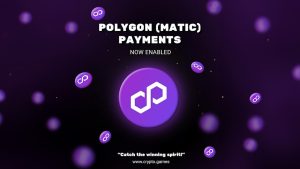What Is an x86 Virtual Machine (Qtum)?
The x86 Virtual Machine (VM) developed by the Qtum team is designed to execute smart contracts in various programming languages. This VM functions similarly to the Ethereum VM but offers some notable improvements:
-
In the Ethereum VM, smart contracts must be written in Solidity and compiled into byte code for execution on the Ethereum Virtual Machine (EVM). However, the Qtum VM allows developers to write smart contracts in any language that supports a JIT compiler, such as C++, Java, Python, and other commonly used languages in application development. This provides dApp developers with greater flexibility in smart contract development.
-
In addition to supporting the gas model used in Ethereum, where users pay for each operation executed in a smart contract, Qtum has introduced two new pricing models: fixed-fee per transaction and fee per transaction.
-
The Qtum VM supports x86 registers and memory operations through a unified 16-bit instruction encoding scheme. This scheme significantly reduces gas costs in common cases compared to the Ethereum VM. As a result, developers can execute more operations per transaction and increase the throughput on the Qtum blockchain.
What Is Qtum?
Qtum is an open-source blockchain project that combines the stability of Bitcoin with the flexibility of Ethereum. It was developed by the Qtum Foundation, based in Singapore, and led by Patrick Dai, Neil Mahi, and Jordan Earls in 2016. The mainnet of Qtum was launched in 2017.
The protocol of Qtum is a combination of Bitcoin Core, proof-of-stake consensus, and the Ethereum Virtual Machine (EVM). It enables the execution of smart contracts using a proof-of-stake consensus mechanism, which consumes less electricity than proof-of-work and reduces the risk of centralization.
Qtum utilizes a Decentralized Governance Protocol (DGP) to ensure the functionality of the blockchain, regardless of the status of a few nodes. This protocol allows for the modification of specific blockchain parameters, such as block size, gas price, and block interval, without the need for a hard fork. Qtum also employs a UTXO transaction model for faster transaction processing and supports smart contracts similar to Ethereum.
The DGP of Qtum assigns specific decision rights to node operators regarding updates, including hard forks. Consensus among node operators is required before updates are implemented on the blockchain. This approach prevents network destabilization caused by bugs or hacks and provides users with clear guidelines for tracking updates.
While there are other cryptocurrency projects with similar goals to Qtum, it is important to note that the unique feature of Qtum lies in its utilization of Bitcoin’s UTXO (unspent transaction output) model. Qtum aims to create smart contracts and dApps (decentralized applications) suitable for enterprise environments.











